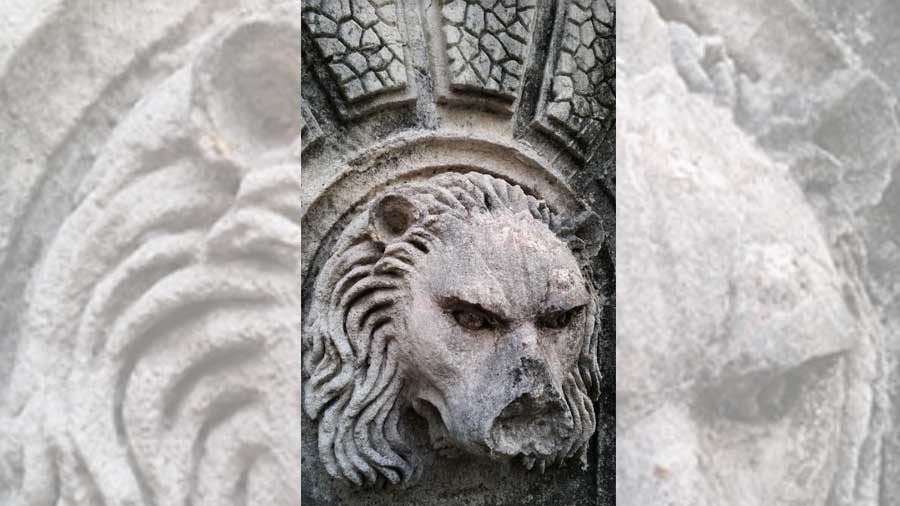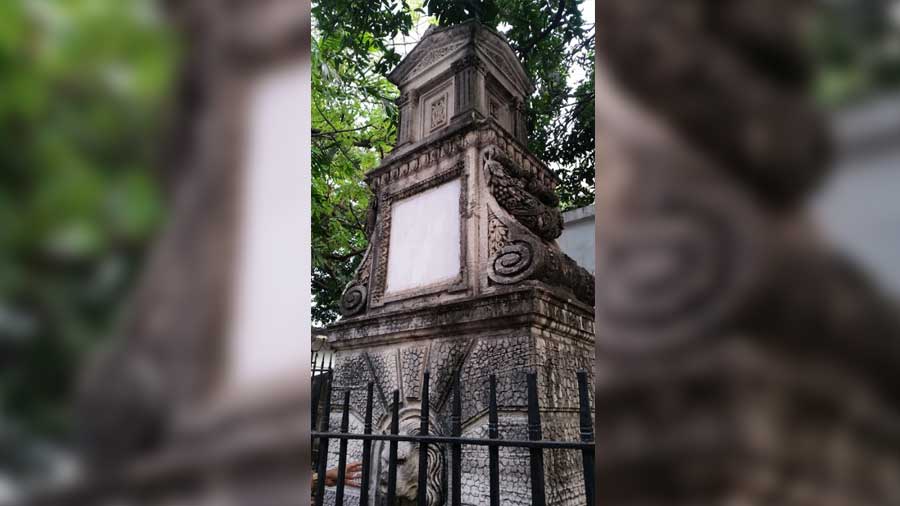In 1966, heritage lover and illustrator Desmond Doig did a series of illustrations on Kolkata’s monuments and landmarks with a short history for The Statesman newspaper.
He was largely shocked and saddened to see the gradual decline and destruction of the city’s architectural heritage, as left by its colonial rulers.
His shock reached a nadir when he had stopped at a corner of Esplanade Row East, near Calcutta High Court. There, he found a marvellous but defunct water fountain in a pathetic condition. He described his disappointment by writing, “Only dismantling the fountain completely could have done more to hide it from view.”

A sketch of the fountain as seen in Desmond Doig’s 1966 book, ‘Calcutta: An Artist’s Impression’
Fifty-five years since then, the fountain is yet to be dismantled by the city. And it’s also sad to say that its maintenance remains almost the same as what Desmond had seen in 1966.
The British gifted Bombay a Flora Fountain, which is still operational at the heart of that city and is one of the best-known landmarks of Mumbai.
Though Kolkata was not as lucky as Mumbai to get a similar Victoriana fountain, but its luck was not so poor either. It got a small yet elegant water fountain in the form of a memorial dedicated to a civil servant of Bengal.
If a walk takes you to near Town Hall of Dalhousie Square, you will find the majestic, but defunct, Victorian-styled fountain with a lion’s head. The graceful beauty of the fountain, which holds a floral capitol on its apex and a lion on the front is perhaps the most unknown yet splendid architectural specimen of colonial Kolkata.

The fountain was built in 1894 in the memory of William Fraser McDonnell, a senior member of the Bengal Civil Services from 1850 to 1886, and also a judge in the Calcutta High Court from 1874 to 1886
.
The fountain was built in 1894 in the memory of William Fraser McDonnell, a senior member of the Bengal Civil Services from 1850 to 1886, and also a judge in the Calcutta High Court from 1874 to 1886. The beautiful water fountain was erected by his friends in England after his demise in 1894.
McDonnell won the Victoria Cross for showing gallantry during the Great Mutiny of 1857 in the district of Shahabad in Bihar. It is believed that during the mutiny, it was his presence of mind and bravery that helped many Europeans to flee the area. Once, the fountain used to contain a tablet on which it was written that “manly rectitude and kindly disposition” won him the award. The tablet is still there, but now nothing is legible.

The nose of the lion is long broken and cracks are visible all over Somen Sengupta
The architecture is pure Neo Gothic Victoriana, executed with floral design on its arms. The upper portion of the front contains a small Greek temple that rests on two small pillars. The apex of the fountain has an urn capitol, again embellished with a floral design.
The most unique part of its design is the two years curved on its two sides. One reads 1850 and the other, 1886. This marks the timespan McDonell spent as a civil servant of Bengal. This is unique because in most of the memorials we find the year of birth and death of the person to whom the memorial is dedicated.

The marble tablet set on the front of the fountain is badly faded and not legible anymore. So, a visitor has no way of knowing anything about the structure, unless he looks it up on the net
.
The gargoyle lion head water spout at the bottom is pure British in style. The water mouth was once supplemented with a metallic trough meant for horses. That water trough was in very bad condition till the mid -’60s and has presently vanished. Even the marble tablet set on the front of the fountain is badly faded and not legible anymore. So, a visitor has no way of knowing anything about the structure, unless he looks it up on the net.
Today, the fountain is fenced by an iron railing that has become a provision for pavement-dwellers for drying their clothes. The iron railings are so badly placed that the face of the lion is neither clearly visible, nor can be photographed well from the front.
The nose of the lion is long broken and cracks are visible all over.
Lack of civic sense
An ugly construction built the behind of the fountain is a latrine, and that has killed the visual appeal by a great extent. No one can see the rear of the fountain and the land around is covered in wild vegetation.
Though the fountain has been defunct for decades, it still has a magical appeal in its tangible presence that often attracts heritage walkers in the Dalhousie Square area. It is the sheer lack of civic sense and sanity that this peerless gift from the colonial era has not only neglected, but also kept in most shoddy fashion.
Our inability to protect our heritage is slowly hushing up many treasures from a bygone era. A forgotten fountain is just an addition to that long list of shame.
Somen Sengupta is passionate about heritage and travelling and has been writing about it for 26 years. When he is not executing duties as a senior executive in an MNC, he keeps an eye out for intriguing historical trivia and unearths forgotten stories. This also makes him an avid quizzer.
